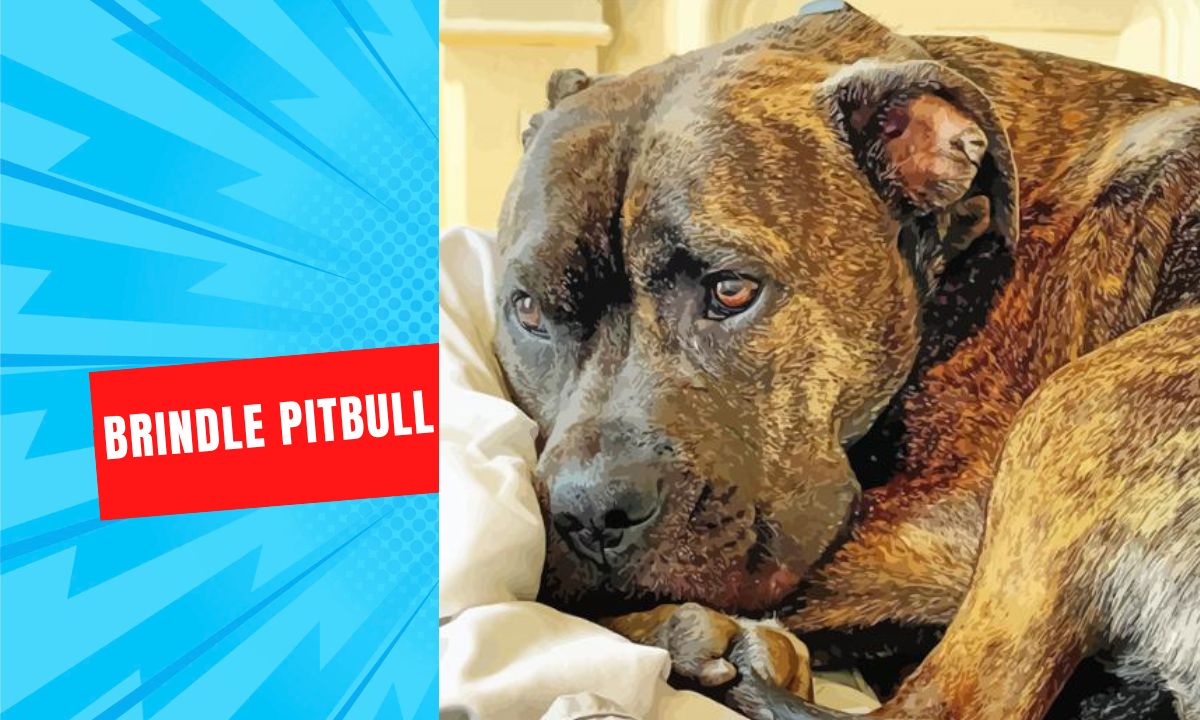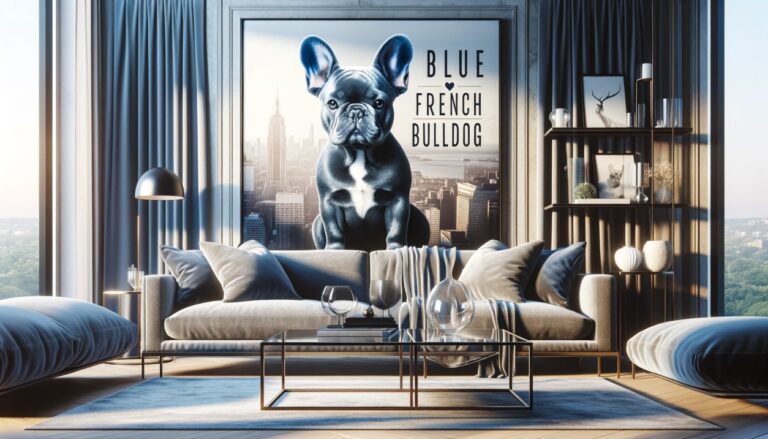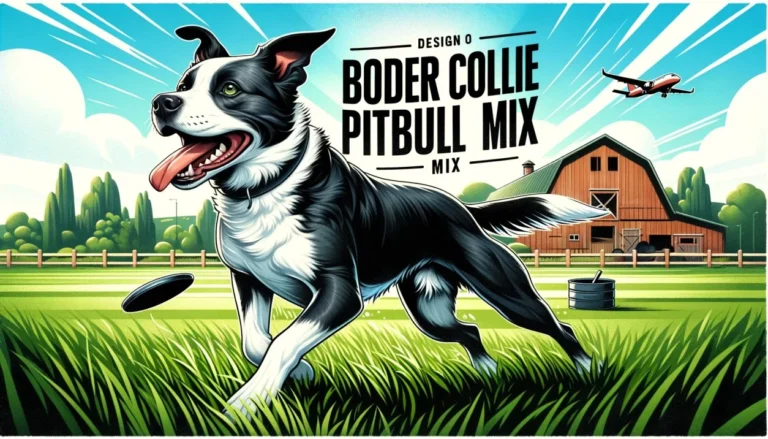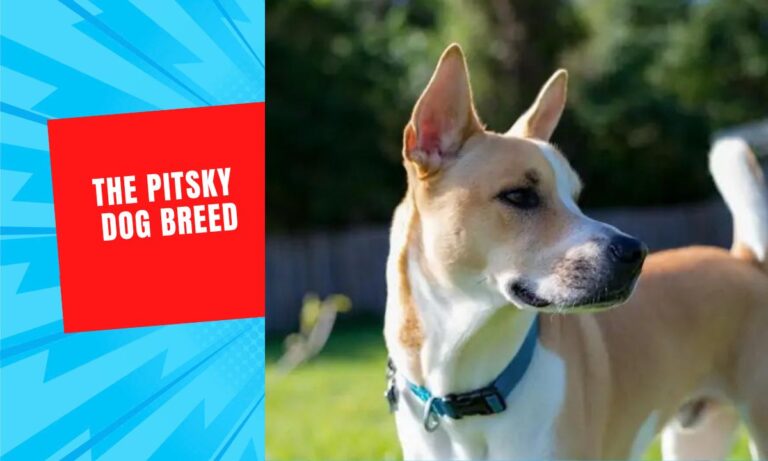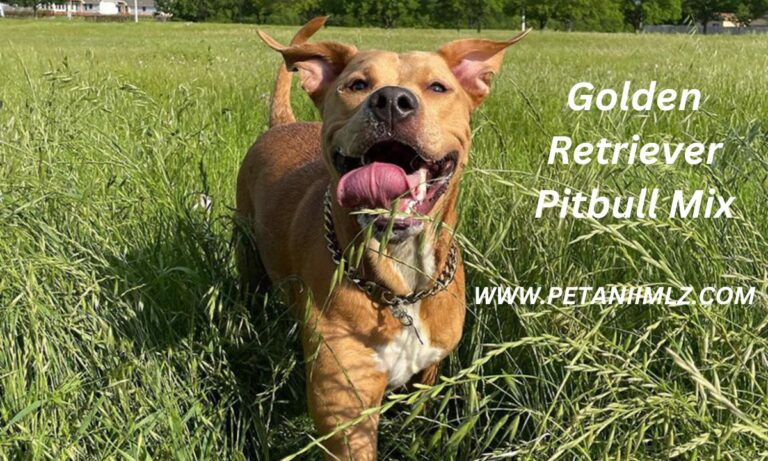Brindle Pitbull: Complete Guide
Introduction:
In this article provides a comprehensive guide to brindle pitbull. The Brindle Pitbull is not just another dog breed. It stands out with its unique coat pattern and a history that’s as rich as its appearance. This breed, known for its distinctive brindle coat, is a testament to nature’s artistry and the result of careful breeding over the years.
Origin and History of Brindle Pitbull
The Brindle Pitbull has its roots in England. Originally, these dogs were bred for bull-baiting and dog fighting, activities that required strength, agility, and a certain level of aggression.
As these sports were banned and fell out of favor, the Brindle Pitbull began its transition. No longer seen as just a fighting dog, it started to be recognized for its other qualities: loyalty, affection, and its protective nature.
Over time, the Brindle Pitbull has become a beloved family pet. Families and individuals across the world have come to appreciate this breed for its affectionate nature, intelligence, and the strong bond it forms with its owners.
In the subsequent sections, we’ll delve deeper into the characteristics, temperament, and care tips for the Brindle Pitbull, ensuring you have a comprehensive understanding of this remarkable breed.
The different types of Pitbull dogs
Pitbull is a term commonly used to describe a group of breeds that share similar physical characteristics and ancestry. Here are the different types of dogs that are often referred to as “Pitbulls”:
- American Pit Bull Terrier (APBT)
- Origin: United States
- Characteristics: Muscular, agile, and strong. They have a short, shiny coat and can come in almost any color or color combination.
- Temperament: Loyal, affectionate, and good with families. They are known for their intelligence and eagerness to please.
- American Staffordshire Terrier (AmStaff)
- Origin: United States
- Characteristics: Similar in appearance to the APBT but often slightly heavier and stockier.
- Temperament: Friendly, loyal, and good-natured. They are known to be excellent with children.
- Staffordshire Bull Terrier
- Origin: England
- Characteristics: Smaller than the APBT and AmStaff. They have a broad head, muscular build, and a short coat.
- Temperament: Courageous, intelligent, and affectionate. They are known for their love of people, especially children.
- American Bully
- Origin: United States
- Characteristics: A relatively new breed, they are stocky, muscular, and have a broader head compared to other Pitbull types.
- Temperament: Calm, confident, and loving. They are known for their gentle disposition, especially with children.
- Bull Terrier
- Origin: England
- Characteristics: Recognizable by their unique egg-shaped head, they have a muscular body and a short, glossy coat.
- Temperament: Energetic, playful, and clownish. They are known for their spirited and affectionate nature.
It’s essential to note that the term “Pitbull” is often used in a generic sense and is not a recognized breed on its own. Each of the breeds mentioned above has its own unique characteristics and history. Additionally, due to negative media portrayal and misconceptions, “Pitbull” breeds have faced undue prejudice and breed-specific legislation in many places. It’s crucial to approach these breeds with an open mind and understand that, like all dogs, their behavior is largely influenced by upbringing, training, and socialization.
What health issues can a Brindle Pitbull suffer from?
Brindle Pitbulls, like other Pitbull types, can be prone to certain health issues. It’s important to note that the brindle coat pattern itself doesn’t influence these health concerns; rather, they are common to the breed. Here are some health issues that Brindle Pitbulls might suffer from:
- Hip Dysplasia
- A genetic condition where the hip joint doesn’t fit into the hip socket properly. This can lead to arthritis and pain.
- Skin Allergies
- Pitbulls can be prone to skin issues, including allergies to certain foods, environmental factors, or flea bites. This can result in itching, redness, and skin infections.
- Heart Conditions
- Some Pitbulls can suffer from heart diseases like congenital heart defects or cardiomyopathy.
- Hypothyroidism
- A condition where the thyroid gland doesn’t produce enough hormones, leading to issues like lethargy, weight gain, and skin problems.
- Cataracts
- This condition can cause cloudiness in the lens of the eye, leading to decreased vision or blindness.
- Demodectic Mange
- Caused by the Demodex mite, this condition can lead to hair loss, redness, scaling, and skin infections.
- Neurological Disorders
- Conditions like cerebellar abiotrophy, where parts of the brain related to movement degenerate, can affect some Pitbulls.
- Knee Issues
- Conditions like patellar luxation, where the kneecap dislocates or moves out of its normal position, can be seen in some dogs.
- Gastric Torsion (Bloat)
- A life-threatening condition where the stomach twists on itself, preventing gas and food from escaping.
Regular check-ups with a veterinarian, a balanced diet, proper exercise, and early detection can help manage or prevent many of these health issues. It’s also beneficial for potential and current Brindle Pitbull owners to be aware of these concerns to provide the best care for their pets.
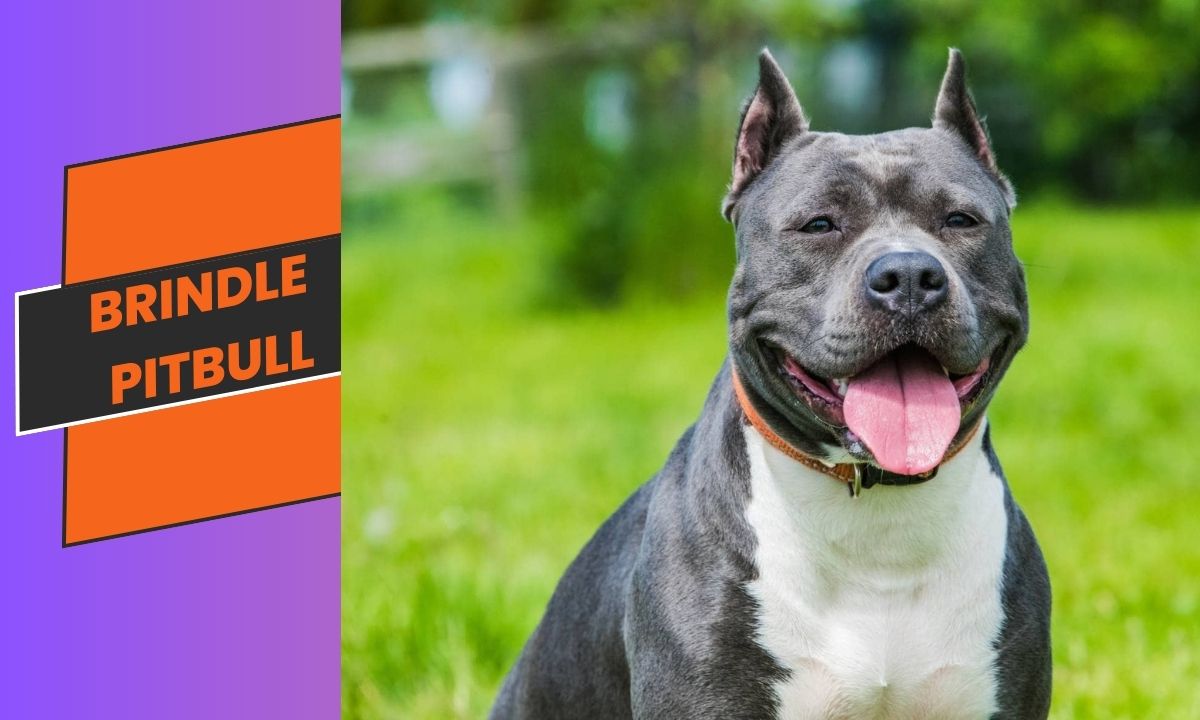
How should you train a Brindle Pitbull?
Training a Brindle Pitbull is similar to training any other dog, but given their strength, energy, and sometimes stubborn nature, certain approaches can be more effective. Here’s a guide on how to train a Brindle Pitbull:
- Start Early:
- Begin training as soon as you bring your puppy home. The earlier you start, the easier it will be to mold their behavior.
- Positive Reinforcement:
- Always use positive reinforcement techniques. Reward good behavior with treats, praise, or play. This encourages the dog to repeat the desired behavior.
- Consistency is Key:
- Be consistent with commands and rewards. If you’re training with other family members, ensure everyone uses the same commands and rewards to avoid confusing the dog.
- Socialization:
- Expose your Brindle Pitbull to various environments, people, and other animals from a young age. This helps in reducing aggression and fear, making them well-adjusted adults.
- Obedience Training:
- Teach basic commands like “sit,” “stay,” “come,” and “heel.” This not only establishes respect between you and your dog but also ensures their safety.
- Avoid Physical Punishment:
- Never use physical force or shout at your dog. This can lead to fear, aggression, and a lack of trust.
- Exercise:
- Brindle Pitbulls are energetic dogs. Ensure they get enough physical activity daily to prevent destructive behaviors. Activities can include walks, playtime, or agility training.
- Mental Stimulation:
- Along with physical exercise, provide mental stimulation using puzzle toys, obedience training, or teaching new tricks.
- Set Boundaries:
- If there are areas or behaviors that are off-limits, establish those boundaries early on. For instance, if you don’t want your dog on the furniture, be consistent in enforcing this rule.
- Join a Training Class:
- Consider enrolling in a puppy or obedience class. This provides an opportunity for socialization and learning in a structured environment.
- Address Aggression Early:
- If you notice signs of aggression, address them immediately. Consult with a professional dog trainer or behaviorist if needed.
- Patience:
- Remember, every dog is different. Some might pick up commands quickly, while others might take time. Be patient and persistent.
Training a Brindle Pitbull requires time, patience, and consistency. With the right approach, they can be well-behaved, loyal, and loving companions. Always focus on building a strong bond of trust and understanding with your dog.
Understanding the Brindle Pitbull
Defining the Brindle Pitbull
Brindle Pitbulls are renowned for two primary features:
Their distinct Brindle coat pattern, which is a mix of dark and light stripes, giving them a unique and captivating appearance.
Their athletic and muscular physique, which not only adds to their visual appeal but also speaks volumes about their strength and agility.
The Reverse Brindle Pitbull
The Reverse Brindle Pitbull showcases a unique coat pattern where the stripes are lighter against a darker background.
This pattern is a variation and is distinct from the traditional Brindle, making it a rarity and a topic of interest among enthusiasts.
Brindle Pitbull Appearance
The Brindle Pitbull boasts a coat characterized by a mix of stripes, predominantly in shades of brown and black.
Subtypes:
- Blue Nose Brindle Pitbulls: Recognized by a blue or grayish-blue nose.
- Red Nose Brindle Pitbulls: Distinguished by a red or reddish-brown nose.
Size and Weight of the Brindle Pitbull
Typically, they weigh between 35-60 pounds and stand 18-21 inches tall.
Factors like genetics, diet, and overall health play a role in determining their size and weight.
Coat Color Genetics
The Brindle coat pattern is a result of the interaction of specific genes that determine the distribution of black and brown pigments.
- The pattern emerges from the expression of the K and Agouti genes, producing the distinctive striped appearance.
Temperament and Personality
- Brindle Pitbulls are known for their affectionate and playful nature.
- They are often chosen as family pets due to their loyalty, but their high energy levels can pose challenges, especially in households with very young children.
Health and Lifespan
- Common health concerns include hip dysplasia, skin allergies, and certain eye conditions.
- On average, a Brindle Pitbull can live up to 12-14 years, with proper care potentially extending their lifespan.
Cost of a Brindle Pitbull Puppy
- Prices can range from $800 to $2,000, influenced by factors like breeder reputation, location, and specific coat patterns.
- Owning a Brindle Pitbull also comes with ongoing expenses like food, healthcare, and grooming.
Shedding and Grooming
- Yes, Brindle Pitbulls do shed, especially during seasonal changes.
- Regular brushing and a balanced diet can help in managing shedding and maintaining a healthy coat.
FAQs
Are Brindle Pitbulls rare?
They are unique but not extremely rare.
What’s the rarest Pitbull color?
Blue or blue-nose is considered among the rarest.
Do Brindle Pitbulls make good family dogs?
Absolutely, with proper training and socialization, they can be excellent family pets.
Which dog is best pitbull?
- The term “Pitbull” encompasses several breeds, including the American Pit Bull Terrier, American Staffordshire Terrier, and the Staffordshire Bull Terrier. The “best” Pitbull depends on what you’re looking for in a dog. For instance, the American Pit Bull Terrier is known for its loyalty and affection, while the Staffordshire Bull Terrier is smaller and can be a good choice for families with limited space.
Which Colour is rare in pitbull?
The blue or blue-nose Pitbull is considered among the rarest colors. However, it’s worth noting that color doesn’t affect the dog’s temperament or health.
Are brindle dogs rare?
Brindle is a unique coat pattern, but it’s not extremely rare. It can be found in various dog breeds, not just Pitbulls.
What dog has the strongest bite?
The Kangal, a Turkish shepherd dog, is often cited as having the strongest bite force, measured at over 700 pounds per square inch (psi). However, it’s essential to understand that bite strength can vary within breeds and individual dogs.
Is Pitbull a powerful dog?
Yes, Pitbulls are known for their strength, agility, and muscular build. They were originally bred for bull-baiting and later as farm dogs, which required a good deal of strength and endurance.
What Colour is brindle?
Brindle refers to a coat pattern characterized by dark stripes on a lighter background. The colors can range from black, brown, and tan stripes.
What DNA is brindle?
The brindle pattern in dogs is influenced by the interaction of specific genes. The K locus and the Agouti gene play roles in the expression of the brindle pattern. When certain alleles of these genes are present, they produce the distinctive striped appearance.
What makes dogs brindle?
The brindle coat pattern in dogs is a result of genetics. It’s an expression of specific alleles of the K locus and the Agouti gene. When these genes interact in a particular way, they produce the dark and light striped pattern characteristic of brindle.
Conclusion
In this guide, we’ve delved deep into understanding the Brindle Pitbull. From their unique appearance to their temperament, we’ve covered it all. If you’re considering adding one to your family, remember that, like all pets, they require love, care, and understanding. With the right environment, a Brindle Pitbull can be a loyal and loving companion.
